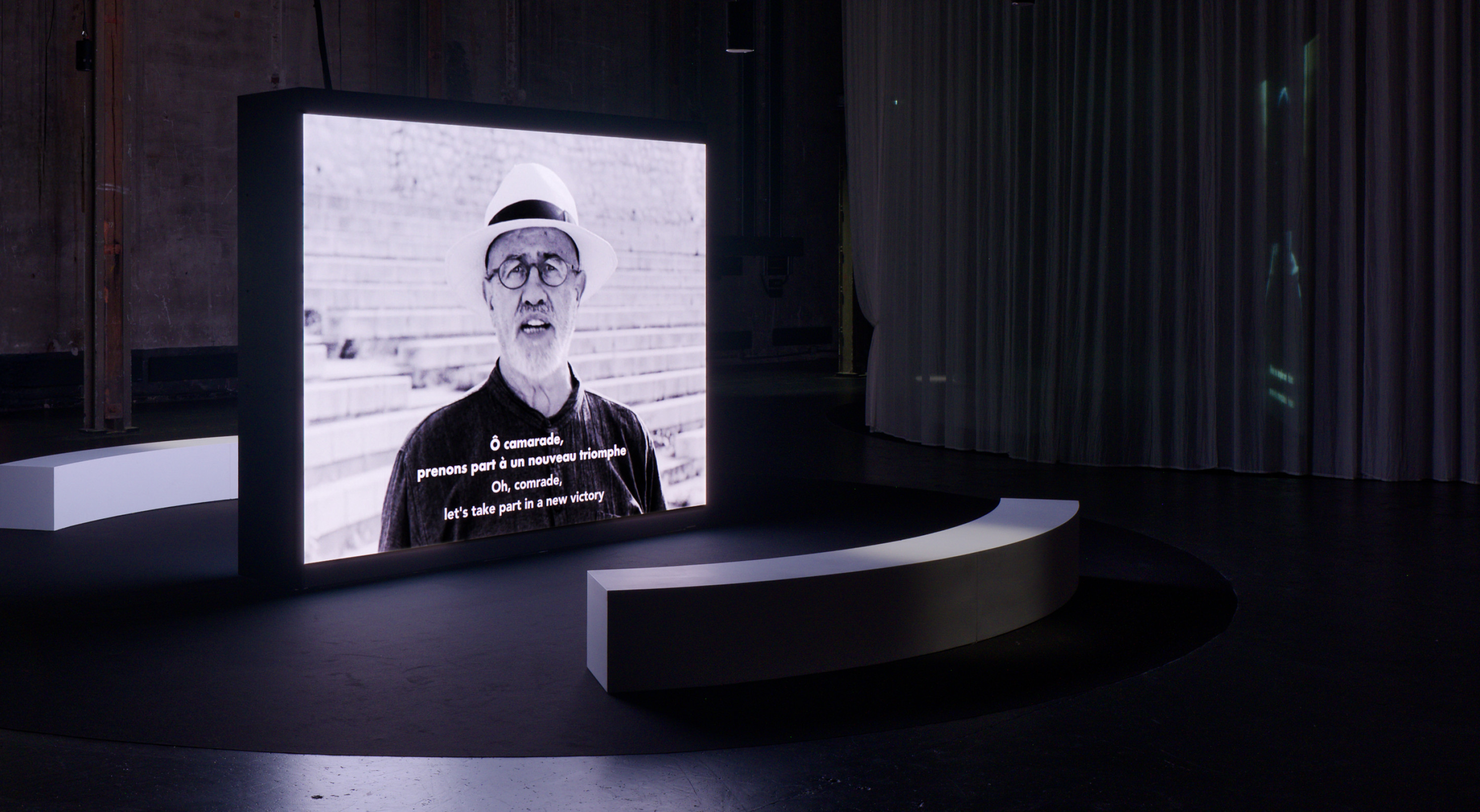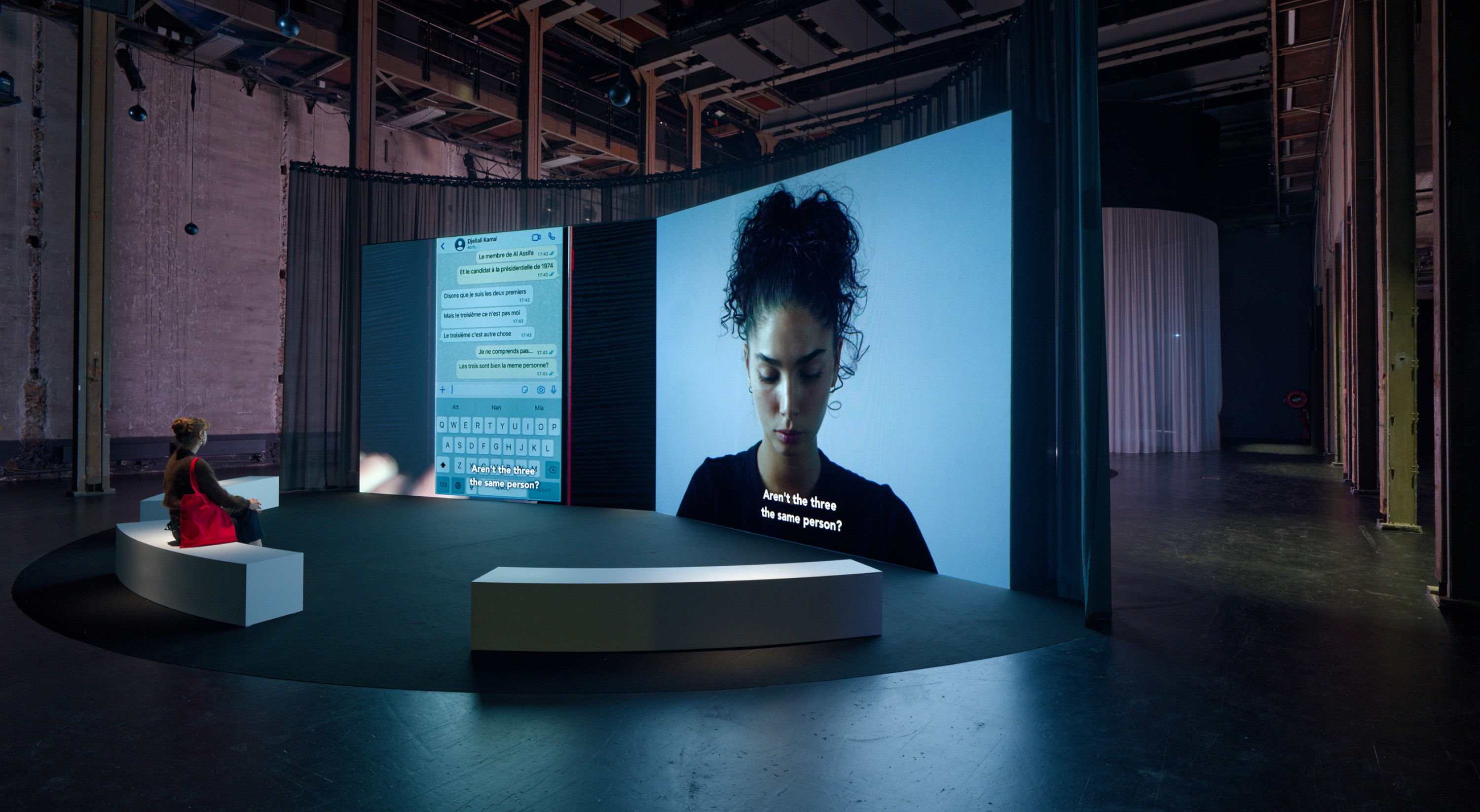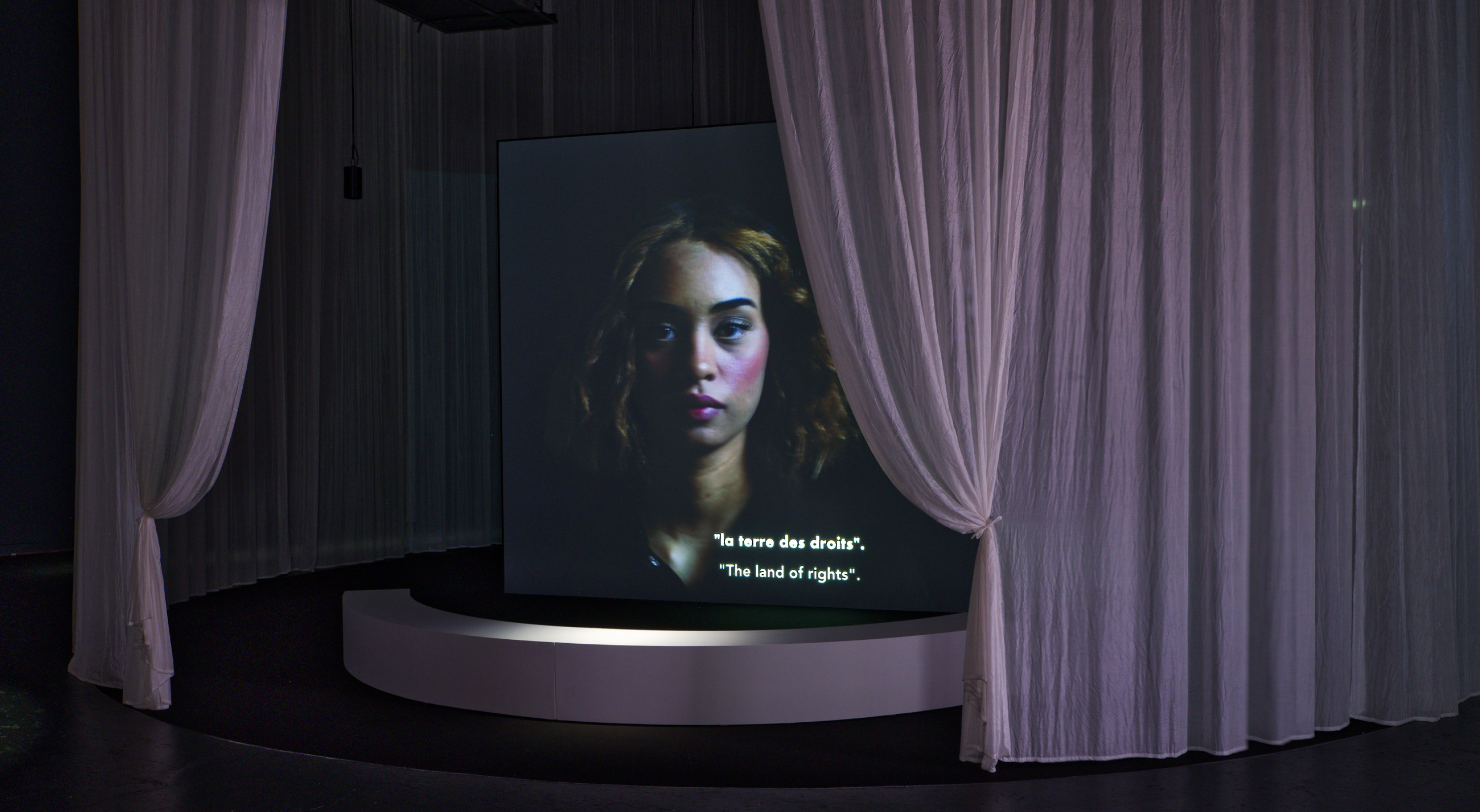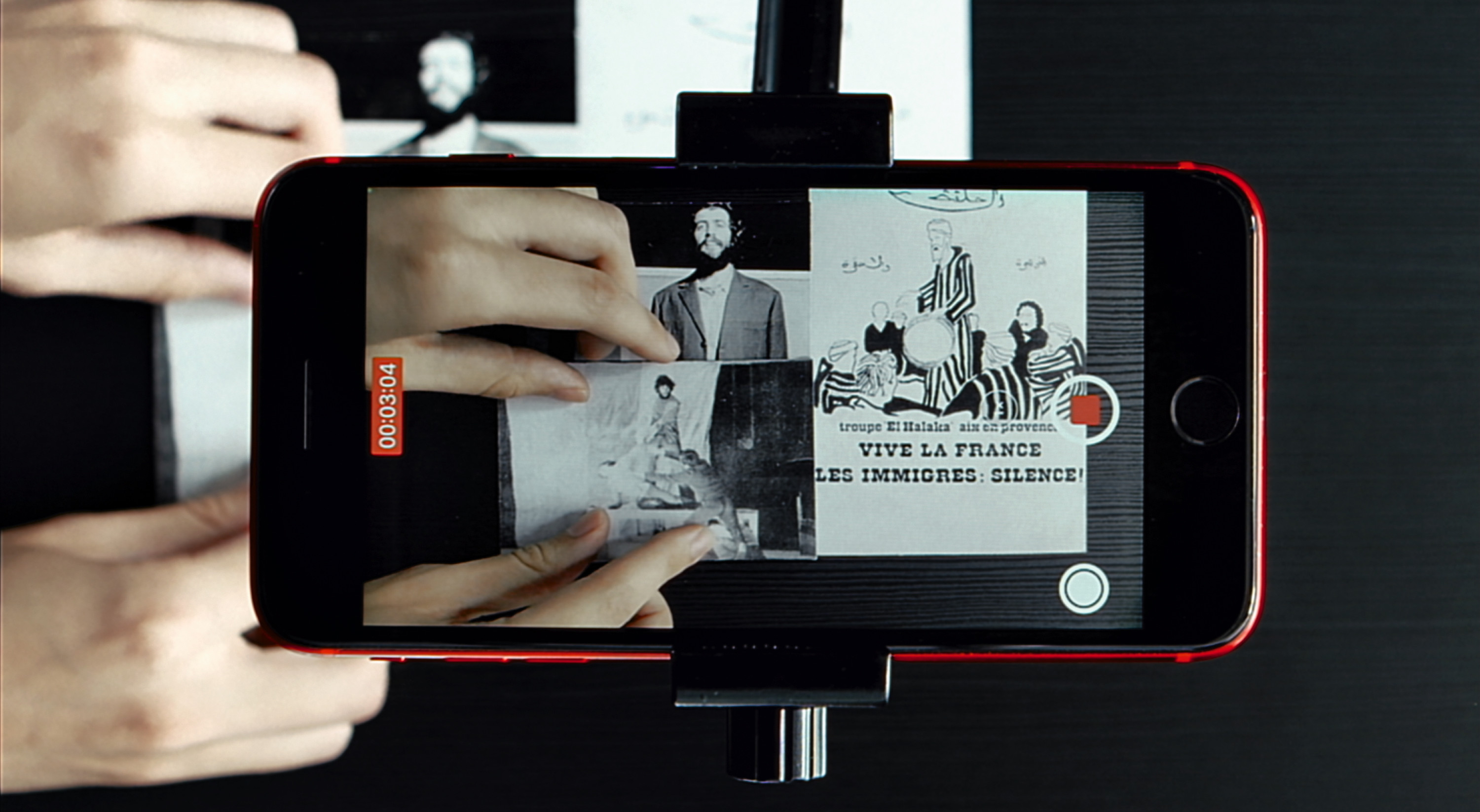Bouchra Khalili
Astérismes (Fig. 2) : The Circle and The Public Storyteller
Astérismes (Fig. 1 à 3)
octoberoct 2 – 26
Thursday october 2
18h - Vernissage
Friday october 3
11h - 19h
Saturday october 4
11h - 19h
Sunday october 5
11h - 19h
Thursday october 9
11h - 19h
Friday october 10
11h - 19h
Saturday october 11
11h - 19h
Sunday october 12
11h - 19h
Thursday october 16
11h - 19h
Friday october 17
11h - 19h
Saturday october 18
11h - 19h
Sunday october 19
11h - 19h
Tuesday october 21
11h - 19h
Wednesday october 22
11h - 19h
Thursday october 23
11h - 19h
Friday october 24
11h - 19h
Saturday october 25
11h - 19h
Sunday october 26
11h - 19h
Artist Bouchra Khalili. Commissariat Clément Dirié.
The Festival d'Automne à Paris is the managing director of the exhibitions, in co-production with T2G Théâtre de Gennevilliers, Centre Dramatique National. Festival d'Automne à Paris, the
T2G Théâtre de Gennevilliers, Centre Dramatique National and L'Odéon Théâtre de l'Europe present these exhibitions in co-realisation.
Athens, Marseilles, Marrakesh, Paris; Isavella, Giannis, Elias, Philippe, Mustapha, Smaïne, Hedi, Mia, Lucas; Al Assifa, Al Halaka, Djellali Kamal, Mririda n’Aït Attik; today and yesterday, from the 1970s to the 2020s: Bouchra Khalili brings together all these places, experiences, voices, and moments in her multi-site, multidisciplinary project entitled Astérismes (Fig. 1 to 3).
She deploys a constellation of narratives linking past and present to project shared futures. Based on her long-term research on the Arab Workers' Movement (MTA, active in the 1970s) and its theater troupes Al Assifa and Al Halaka (“The Storm” and “The Circle”), as well as on the ancestral forms of collective speech transmission in Morocco (storytellers and public writers)—which inspired the MTA's theatrical strategies—the works exhibited in each of the three venues respond to and complement each other. They explore the links between the representation of untold histories, performance, and moving images. They stage different activations of memory, transmission, and myth, collective action and public space, and the figures of the artist and the performer.
The first part at the T2G Theater in Gennevilliers presents the video installation The Tempest Society (2017), the first work created by Khalili as part of her research on the Arab Workers’ Movement. Produced in Athens, the cradle of theater and democracy, it revives Al Assifa's theatrical strategies in light of the successive crises experienced by contemporary Greece.
The second part, at the Odéon Théâtre de l'Europe, transforms the theater stage into an exhibition space where the voices and history of Al Assifa and Al Halaka resonate. In The Circle (2023), Mia and Lucas, two young people from Marseille descended from North African immigrants, return to the roots of the MTA and its troupes, a story which culminated in Djellali Kamal's candidacy in the 1974 French presidential election. A member of the MTA and Al Assifa, Kamal transformed his candidacy for “those who do not have the right to vote” into a performance of public and collective visibility. The Public Storyteller (2024) returns to the origins of Al Assifa and Al Halaka's inspiration: the ancestral tradition of public storytelling in Morocco and its rituals. For this work, Khalili invites a young storyteller from Marrakesh to reactivate the story of Kamal's candidacy in order to bring forth his specter.
The final part at the Théâtre de la Ville presents the world premiere of The Public Writer, filmed during the summer of 2025 in Morocco. This new work follows the young disciple of a public writer who composes and sends messages to ghosts and for ghosts. Unless he himself is the ghost of a ghost? Like that of the Amazigh storyteller and poet Mririda n'Aït Attik, who was active in the first half of the 20th century in the High Atlas Mountains. She haunts the film from beginning to end.
See also
In the same place




